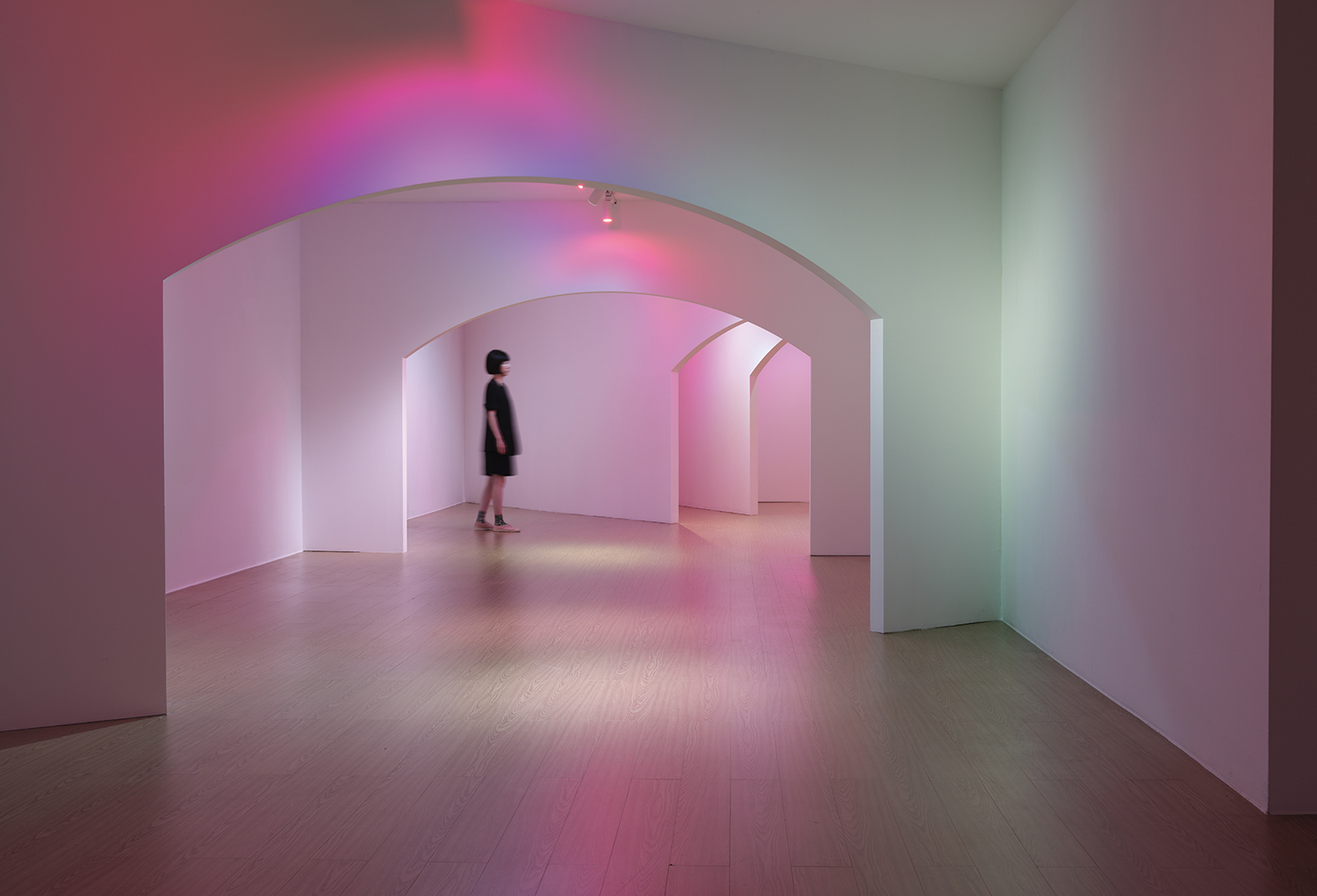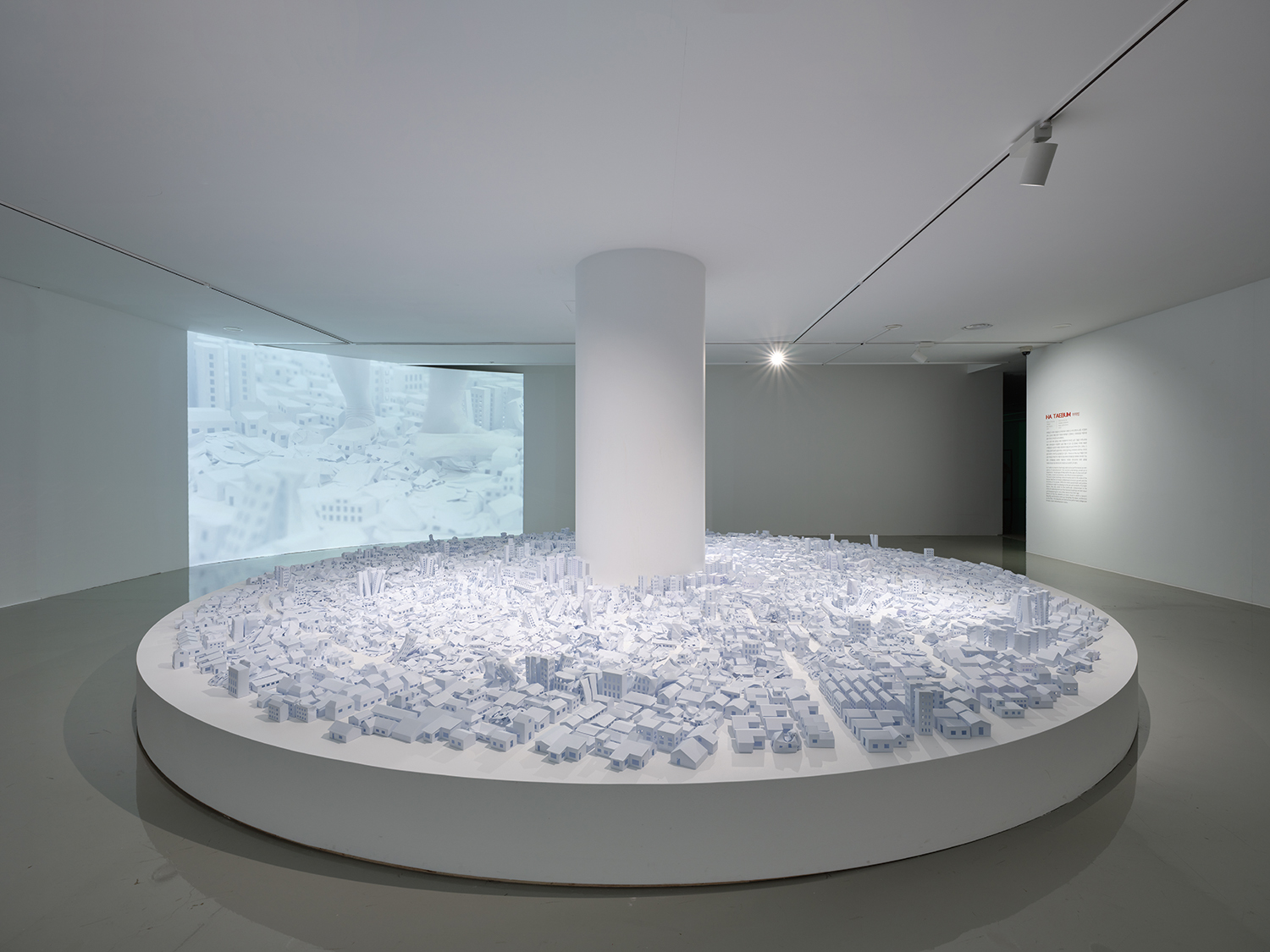SPACE November 2023 (No. 672)

Installation view of The Intro / Image courtesy of Cheongju Museum of Art

Installation view of Dance on the City / Image courtesy of Cheongju Museum of Art
‘Architecture Becomes Art’, an exhibition curated by the Cheongju Museum of Art about the interaction between architecture and art, has been on display since Aug. 24. Fifteen artists, including architects, installation artists, and media artists present works based on their reflections on space. The architectural elements of the Cheongju Art Museum are dramatised in the exhibition, including the museum’s outdoor courtyard, concourse, grand staircase, and three floors of indoor spaces with large and small exhibition rooms.
Stepping inside, the eye is drawn to the atrium in the centre of the museum, where Na Hyunʼs Babel-Ishtar (2023) fills the space along the central staircase. It is part of the Babel Tower Project, which the artist has been working on since 2012, reinterpreting historical events and creating a new formative language through archive collection and analysis. In the Babel Tower installed in this exhibition, a lion statue symbolising the guardian god of ancient Babylon is placed in the centre, and naturalised plants from Cheongju are planted on top of the tower, conveying the message that a ‘Babel Tower’ can exist anywhere in our daily lives. Park Yeojoo’s The Intro (2023) is incorporated into the introduction of the second floor exhibition hall. The arched structure and subtle lighting that viewers pass through as they ascend the central staircase not only evoke a sense of classical religious architecture, but also serve as a transitional space for the rest of the exhibition, helping viewers to become immersed in the experience. There are also several interactive works. Ahn Kyuchul, whose installations change according to space and context, created 56 Rooms (2023), which allows the viewers to move freely within the work. At the boundaries of the 56 rooms, white cloth curtains are drawn, creating the experience of passing through a giant labyrinth, which the artist explains is a microcosm of our lives, with subdivided spaces that cannot be viewed as a whole. Meanwhile, Ha Taebum expresses a critical mind about Korean architecture and cities in a beautiful metaphor. A dancer performs on top of a city lined with apartments and houses made of paper. In contrast to the beautiful dance, the paper buildings are stepped on and crushed. With the strange combination of these two treacherous acts, Dance on the city (2023) makes us contemplate the social phenomenon of the reckless redevelopment in an uncanny way. The 30 works in the exhibition express themselves in a language that cannot be defined as either architectural or artistic, and which involves structure, light, materials, colour, and environment. The works interact with the architectural space of the Cheongju Museum of Art to create a resonance that can only be sensed on site. The exhibition is on view until Nov. 19.





